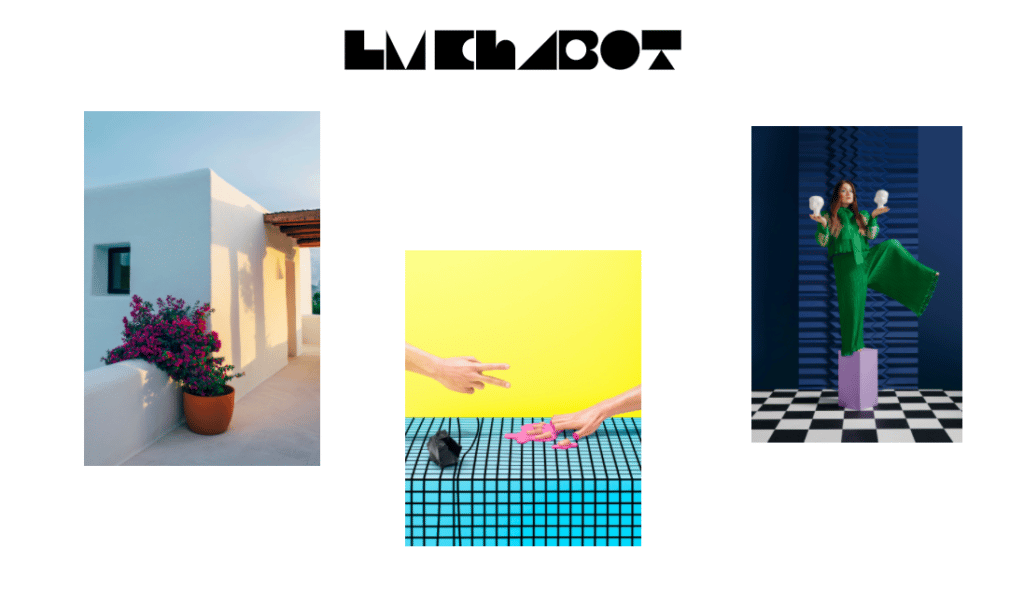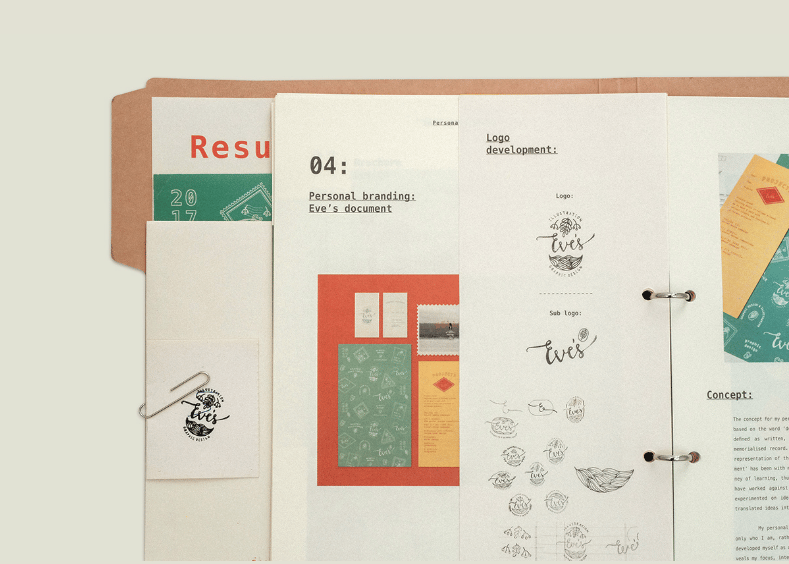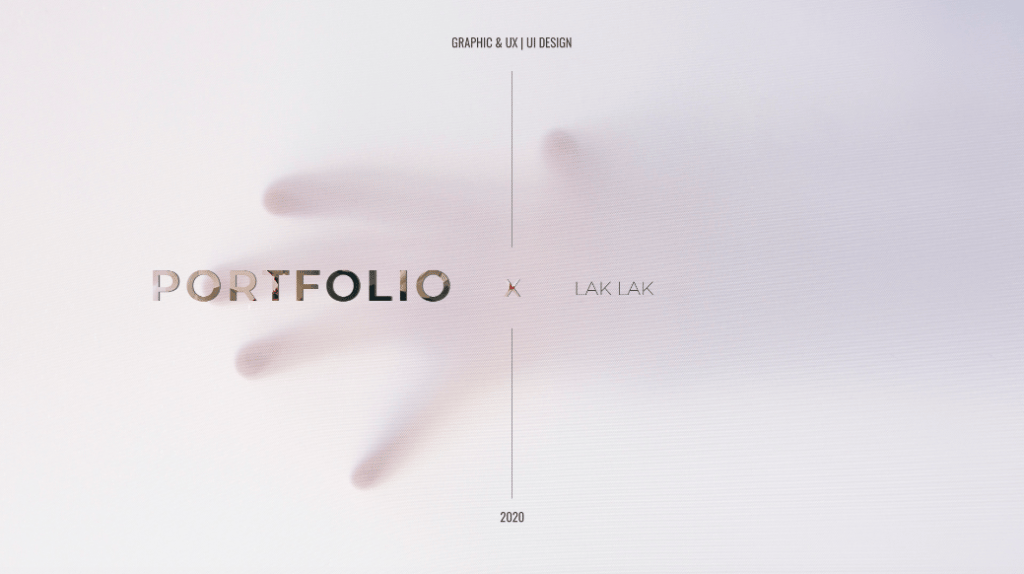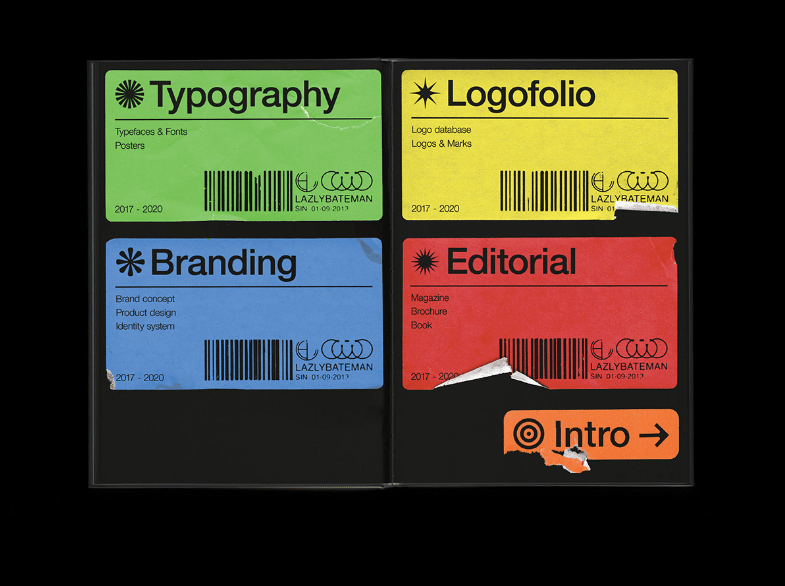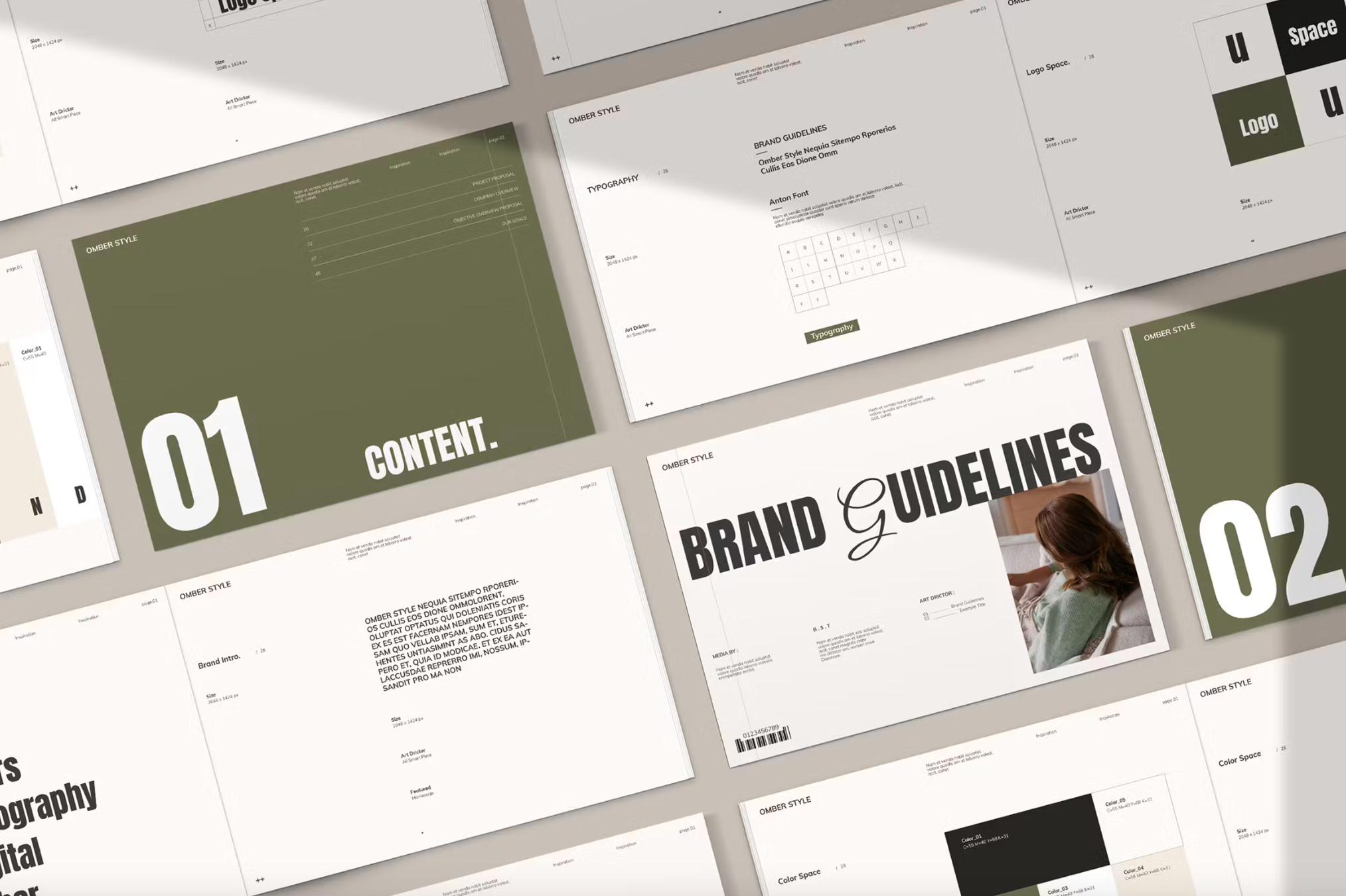You never get a second chance at a first impression, but with an on point portfolio – you won’t need one! Here's how to create a killer portfolio that stands out from the crowd.
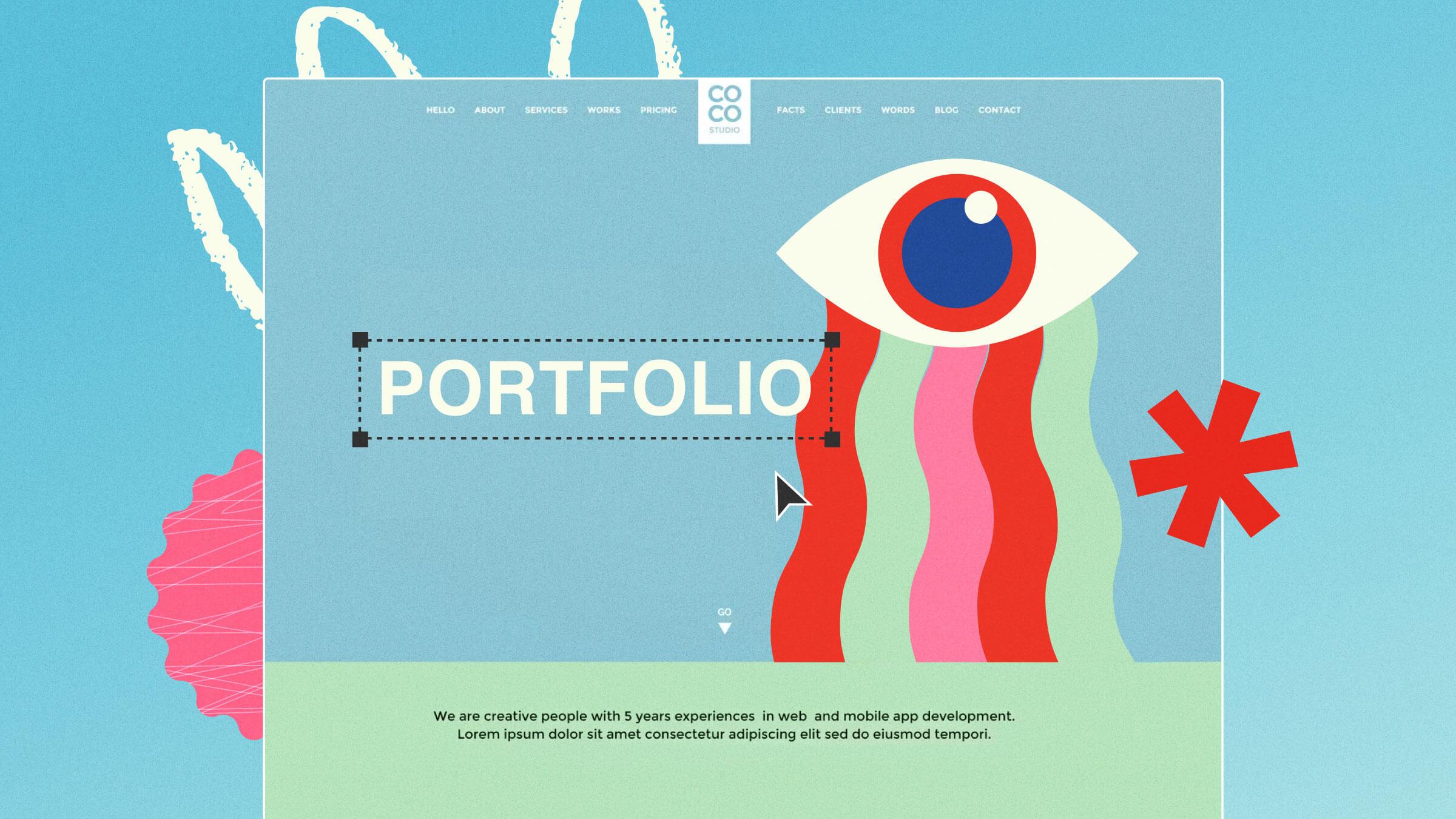
If the thought of creating the perfect portfolio makes you want to wrap yourself up in a blanket and sob into a tub of Ben + Jerry’s – you’re not alone. The idea of scrutinizing and minimizing your entire body of work into one pretty little package isn’t just overwhelming; it’s downright terrifying!
But, as a designer, your portfolio is typically your first touchpoint for prospective clients, jobs, or opportunities, so you have to nail it. You never get a second chance at a first impression, but with an on-point portfolio – you won’t need one.
Whether you’re looking to amplify your portfolio, revamp your portfolio, or build a whole new portfolio from scratch, we’ve put together this handy guide containing everything you need to know to showcase your work in style.
What Makes a Good Creative Portfolio?
A creative portfolio is essential for anyone who wants to showcase their work in design, illustration, animation, or any other creative field. An excellent creative portfolio can open doors to new opportunities and help you establish yourself in your industry. But what makes a stand-out creative portfolio? Here are some key elements to keep in mind.
1. Consistency












Consistency is critical to creating a good portfolio. Your portfolio should have a cohesive look and feel, using consistent fonts, color schemes, and design elements. Consistency also applies to the content of your portfolio. Your portfolio should reflect your style and personality, so choose a theme, style, or niche you’re passionate about and stick to it.
2. Quality Over Quantity


Quality over quantity is a great rule of thumb for creating a portfolio. It’s better to have fewer high-quality pieces than many mediocre ones. Showcase your best work to demonstrate your skills and give potential employers or clients a clear understanding of your experience and abilities. Your portfolio represents you and your work, so only include pieces you’re proud of that are reflective of your current style and standard of work.
3. Show Your Range


















While showcasing your best work is important, showing your range is just as crucial. You don’t want to pigeonhole yourself into one style or genre. Show your creative breadth by including various works demonstrating your versatility and creativity, and include pieces that showcase different styles, mediums, or techniques.
4. Stay Organized










Your portfolio should be well-organized and easy to navigate. Potential employers or clients should be able to find the information they need quickly, so make sure your contact information is easily accessible. Consider using categories or sections to combine similar pieces, as well as clear headings and subheadings and a table of contents if needed. Make sure your contact information is easily accessible.
5. Professional Presentation






Good presentation is crucial for a powerful portfolio. Your portfolio should be visually appealing, easy to navigate, and include high-quality design, images, and formatting. If unsure where to start, consider using a professional portfolio template for a high-quality, harmonious result. Your portfolio directly reflects your professionalism and attention to detail, so ensure you use a consistent design theme throughout your portfolio, including fonts, colors, and imagery.
What Should You Include in Your Creative Portfolio?
Whether you’re an aspiring artist, designer, writer, or any other creative professional, showcasing your best work is crucial for standing out in today’s competitive industry. But what should you include in your creative portfolio? Here are some key elements to keep in mind.
1. A Personal Statement
Your personal statement should introduce you, your work, and your purpose and give potential employers or clients a sense of your personality and style. Your statement should be concise, compelling and include your background, experience, and goals. It’ll likely be the first thing someone browsing your portfolio sees and reads, so make sure you get it right.
2. Variety
Variety is the spice of life and any creative portfolio! Choose pieces that demonstrate a range of skills and creativity. If you have a particular niche or specialty, highlight it. Include a variety of work demonstrating your versatility, but most importantly, include work relevant to the job or opportunity you are applying for.
3. Skills & Experience
Your portfolio should include a resume or CV highlighting your education, work experience, and relevant skills. Ensure your resume is up-to-date and tailored to the job or opportunity you’re applying for.
4. References and Testimonials
Include references or testimonials from previous employers or clients in your portfolio. These will give potential employers or clients a sense of your work ethic, professionalism, and standard of work.
5. Contact Information
Ensure your contact information is easily accessible in your portfolio, including your name, phone number, email address, website, and social media links. You want potential employers or clients to be able to contact you easily if they’re interested in your work.
How to Create a Killer Creative Portfolio in 7 Steps
A good portfolio should reflect your skills, style, and creativity – plus, it should be eye-catching! Ready to bring your creative portfolio to life? Let’s dive in!
1. Curate Your Best Work
As we’ve already touched on, the first step of creating a great portfolio is potentially the hardest: selecting your best work. While it can be tempting to feature as much work as possible to pad out your portfolio, curating a few high-quality projects is more effective than many average ones.
A portfolio is all about highlighting your best work – not all of it. While becoming attached to every design and project can be easy, you must be cutthroat! Go for projects that demonstrate your creativity, skill, and versatility, and allow each example enough room to shine. Remember, quality over quantity.
“Don’t be worried if you don’t have that many projects to showcase yet, or if you feel a project is too small, as you can always build on your existing projects to create a more substantial portfolio,” says Envato Digital Designer Mel Findlay. “For example, if you’ve designed a logo on its own, create a mini style guide with a color palette and image mood board for that brand, or download a few mockups to showcase how that logo looks on stationery and promotional material.”
2. Plan Your Portfolio
As a designer, your portfolio is so much more than a collection of pretty pictures. Your portfolio is your resume, job application, and best-selling tool, so ensuring it reflects your best work and purpose is important.
Planning is essential for presenting your work portfolio professionally and purposefully, so think about your goals, your style, your strategy, your brand, and your target clients, as well as what you’re highlighting and why.
“I would suggest thinking of yourself as a brand and your portfolio as a piece of marketing to sell that brand,” says Camilla, a graphic designer. “ It can help to write a design brief for yourself that answers a few fundamental questions. Once you know these things about yourself, you’ll be in a great place to create a folio that shows who you are and is tailored to the jobs or clients you want to attract.”
When planning your portfolio, ask yourself these questions:
- What is the purpose of the folio? What do you want to achieve?
- Who is the audience, or what audience do you want to attract?
- What’s your point of difference or your strongest selling point?
3. Create Your Online Portfolio
Once you’ve planned your portfolio, it’s time to bring it to life! While print portfolios can be a lovely, professional touch for job interviews or client meetings, in this day and age, having an online portfolio is crucial. Creating a standalone website for your portfolio increases your professionalism and credibility and is also a great client acquisition tool.
“These days, you should focus on having a digital portfolio over a printed one,” says Mel. “There are various sites and platforms you can use to showcase your work online alongside other creatives, but having a sleek-looking portfolio website of your own will go a long way in making you look more professional.”
While every designer should express their unique style, as a general rule, your portfolio website should be simple, sleek, and straightforward. A beautifully designed website may be eye-catching, but your work still needs to be the star of the show.
While creating a website can seem overwhelming, it doesn’t have to be! Think of your website as a one-stop shop for your clients to get a glimpse of your work, who you are, and what you do.
If you’re looking for something quick, easy, and practical, there are plenty of website templates and template kits out there to help you create a perfect portfolio in no time. Simply choose a template that aligns with your desired style, upload your work and info, and you’re ready to go!
4. Focus on Professional Presentation
Ever heard the saying, “Dress for the job you want, not the job you have”? Well, portfolios are no exception!
People’s perceptions of you and your work heavily depend on how you present it. Whether your body of work is vast or humble, think about the most professional, complementary, or interesting ways of presenting your portfolio to highlight your strengths.
People love knowing the story behind your finished work, so think about presenting your process – from conceptualization to the project in progress to the finished product.
“If you have a single illustration, show concept sketches, zoom in on special details like texture, or mock-up the illustration on a website or in a magazine article,” Mel suggests.
It can also pay to contextualize each project with an engaging title and short paragraph – but keep the text to a minimum. After all, a picture is worth a thousand words!
As a creative, you have a unique perspective, experience, and story – so now’s the time to tell it! Craft a bio that expresses your unique process, journey, or point of view, and personalize your portfolio to tell your story – don’t just list your past jobs.
“I think a great portfolio should show more than just the projects you’ve worked on,” says Mel. “It should give insight into who you are, how you think, and what you’ll be like to work with. Some of these insights will be less obvious than others, but they’ll come through in how you present your work and the written details you include about each project, and how you came to the final result.”
Your portfolio is also a great opportunity to sell yourself, so consider including other distinctive achievements or extra elements to give you an edge. This could include awards, accolades, notable clients, or links to your blog or social media profiles.
5. Iterate & Innovate
While opting for the easiest, quickest, or most comfortable way of presenting your work is tempting, adding a little sparkle to your portfolio is much more likely to catch a client’s eye. After all – outside your comfort zone is where the magic happens.
Tried-and-tested portfolios are popular for a reason – they work! But, if you want yours to stand out, it can pay to do things differently.
“Try to think of ways to make your digital portfolio more dynamic, for example, with movement or interactivity,” says Mel. “You could add some subtle animation to elements on your website or within the mockups themselves, or include a playful interaction to make your folio more memorable. You could also create a demo reel for your design work to include on the homepage of your website or to email out to prospective companies and clients.”
6. Regularly Update Your Portfolio
Congratulations, you’ve just created a killer portfolio! But the work doesn’t end here. The best portfolios are never static – they’re constantly growing and evolving. As you continue honing your craft, make sure you regularly update your portfolio to ensure it reflects your growth. Add your latest and greatest work, showcase your latest projects, and keep your copy fresh – and always remember: quality over quantity.
Tips to Take Your Creative Portfolio to the Next Level
A creative portfolio is a crucial tool for anyone in the creative industry. It’s your chance to showcase your work and skills, demonstrate your unique style and creativity, and leave a lasting impression on potential clients. Here are some tips to help you create the best possible creative portfolio!
1. Tell a Story




















Your portfolio should tell a story about you and your work. Think about how you can highlight your unique perspective and style, your creative journey, and your mission or purpose. You can also include a personal statement or bio explaining your background and what inspires you.
2. Tailor it to Your Audience




















When presenting your portfolio, consider the audience you want to connect with. If you’re applying for a specific job or project, ensure your portfolio reflects that. Choose pieces that showcase your skills and experience relevant to the opportunity you’re applying for, and customize your portfolio to fit the client’s needs.
3. Get Feedback








Share your portfolio with your friends, colleagues, or mentors for feedback and constructive criticism. This can help you identify areas for improvement and refine your portfolio.
4. Showcase Your Creative Process














Consider including information about your creative process to give potential clients or employers a glimpse into your workflow. This could be a ‘watch me work’ or ‘behind the scenes’ style video, a series of progress shots, or another visual representation of your process in action.
5. Use Different Formats & Platforms


In addition to your website or online portfolio, consider using social media platforms like Instagram or Behance to showcase your work and attract a wider audience. It can also pay to try different formats, such as creating a video portfolio or adding motion graphics or interactive elements for some extra pizazz.
To Wrap Up
A great creative portfolio can be a powerful tool to stand out in your field. By showing your best work, organizing it effectively, and tailoring it to your audience, you can create a portfolio that showcases your skills, creativity, and style. Remember to make it visually appealing, update it regularly, and present it professionally to potential clients or employers.
While building a strong creative portfolio takes time and effort, it’s essential for showcasing your talents and attracting potential clients or employers. By following these tips and staying true to your style and personality, you can create a portfolio that truly represents you as a creative professional.





